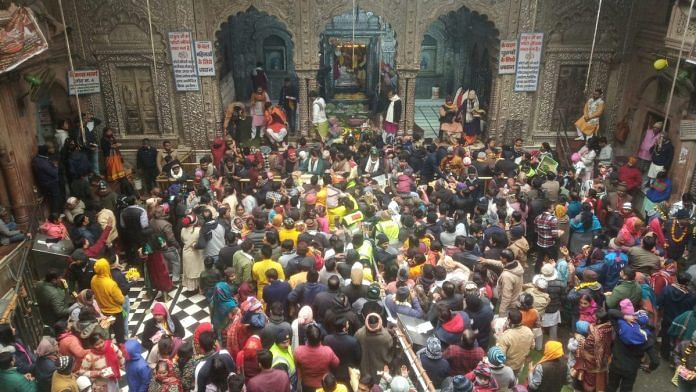The black and red survey markers or chinhankan on more than 300 shops and houses are a sign that change is coming to Bankey Bihari temple in the ancient city of Vrindavan, Uttar Pradesh. Devotees and residents mumble ‘Radhe-Radhe’ as they jostle for space and navigate police barriers. Shopkeepers on either side of the chaotic streets hawk religious accoutrements and sweets while keeping an eye out for the monkeys swinging from branches to rooftops. But the crowded narrow streets seethe and simmer with discontent. The Yogi Adityanath government wants to build a grand complex.
It plans to widen all roads leading to Thakur Shri Bankey Bihariji Maharaj Temple in Mathura district’s Virindavan and develop five acres of land around it. The project is expected to be along the lines of Rs 800 core Kashi Vishwanath temple corridor in Varanasi and the Rs 856 crore Mahakal Lok corridor project in Ujjain, Madhya Pradesh.
Survey work has already begun much to the dismay of local residents who claim that their way of life will be destroyed. And it’s already raining PILs, petitions and impleadments at the Allahabad High Court.
“The government wants to destroy our culture and make Vrindavan a selfie point. There are other temples here, but only the Bankey Bihari temple is being targeted. We want development to happen here but not in this way,” says Amit Gautam, president of the Bankey Bihari Vyaparik Association.
This clash of culture versus change, clogged streets versus corridors of grandeur in India’s holiest cities and sites has been playing out over and over again with the BJP’s push to cash in on India’s religious tourism market, roughly estimated to be worth about $44 billion in 2020.
Three years ago, more than 200 houses and shops were razed in Prime Minister Narendra Modi’s constituency, Varanasi, to make way for the Vishwanath Dham project. More recently, on 1 January 2o23, the Jain community staged protests across the country following the Jharkhand government’s decision to open the religious site Shri Sammed Shikharji to tourists. The Centre has since stayed the decision.
Tourism is one of the major contributors to the GDP, and expenditure on religious tour and travel has more than doubled in recent years. “On cue, Government of India has allotted US$185 million in the 2018-19 Budget for the development of tourist circuits under the Swadesh Darshan and the Pilgrimage Rejuvenation and Spiritual Augmentation Drive (PRASAD) schemes,” according to an article on the Ministry of External Affairs’ economic policy division website.
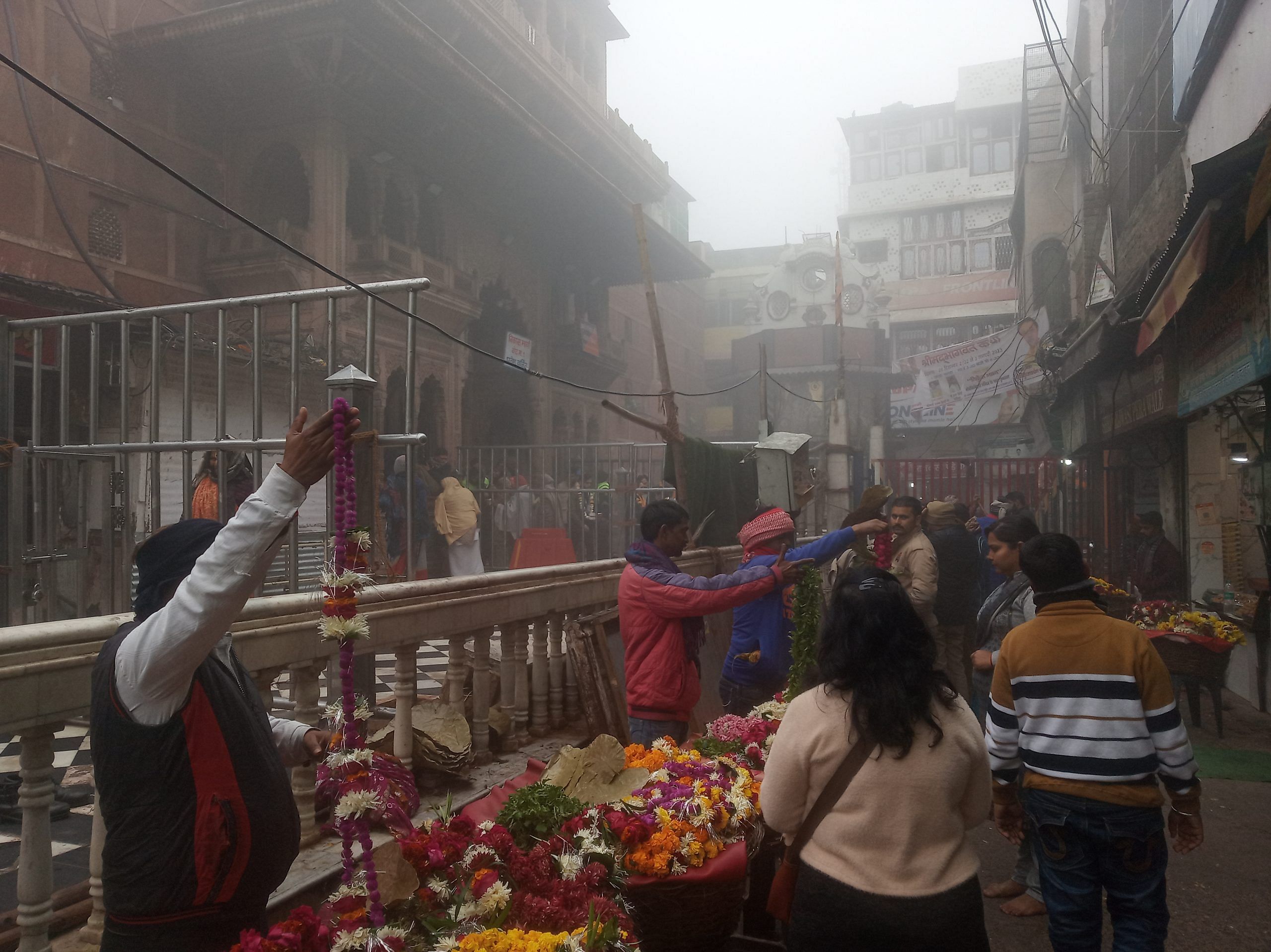
Both projects aim to improve infrastructure around temples and heritage sites.
“But the best part of religious tourism is that the government need not undertake special efforts to promote it as it has been a tradition in India where religion is part of day-to-day life. The government has to just facilitate greater access to places of worship and remove the impediments and encroachments,” says Seshadri Chari, former editor of Organiser.
Last year’s stampede at Bankey Bihari temple that killed at least two people during Janmashtami celebrations has given the government an impetus to modernise and develop the temple corridor.
It’s not just spirituality that is at stake here.
The temple committee is also uneasy. A section of priests claims that the government intends to take control of the temple and its overflowing coffers.
Suspicion is rife and conspiracy theories abound.
“We are staunch supporters of the BJP. It is not that we did not vote for Modi ji or Yogi ji, but there was no such expectation from them. It is being captured legally,” says senior temple priest Rajat Goswami who is also the vice-president of the Banke Bihari Temple Committee.
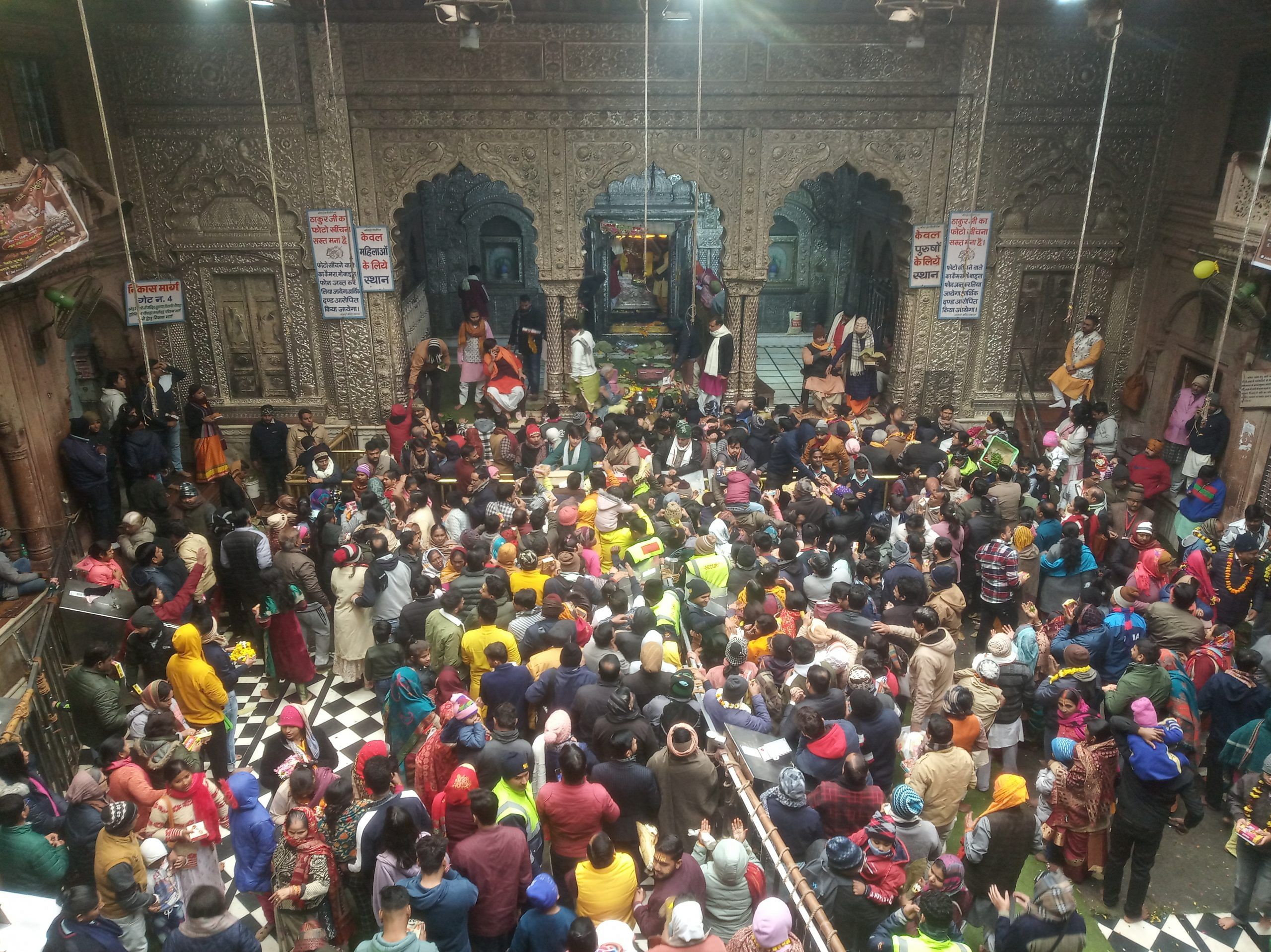
Also read: Mathura Muslims are ready for legal fight. But Hindus being galvanised for historical justice
Unhappy residents
Seventy-year-old Anant Sharma from Mathura city who traces his ancestry to Vrindavan has become an easy target for angry residents and shopkeepers. Two days before the Janmashtami stampede on 19 August 2022, he had filed a public interest litigation (PIL) in the Allahabad High Court calling for the temple complex to be redeveloped. The existing infrastructure cannot contain the lakhs of people who visit Bankey Bihari temple, says Sharma, who has been writing to the local administration since 2012.
“Everyone dreams of visiting Mathura-Vrindavan once in their life. The system is not that good here. We want people to have darshan of God easily,” he told ThePrint.
But his intentions are being questioned by residents, many of whom allege that Sharma is doing this at the instigation of the BJP.
After the stampede and the public outcry that followed, the Uttar Pradesh government entrusted the task of investigating the incident to a committee comprising former DGP Sulkhan Singh and Divisional Commissioner of Aligarh Gaurav Dayal. It so happened that Chief Minister Yogi Adityanath was on a tour of Mathura when the stampede took place.
Soon, there was talk of developing a huge corridor from Bankey Bihari temple to Yamuna. The investigating committee also recommended that all roads leading to Bankey Bihari temple be widened to nine metres.
Sharma was vindicated–finally, the administration was taking some action.
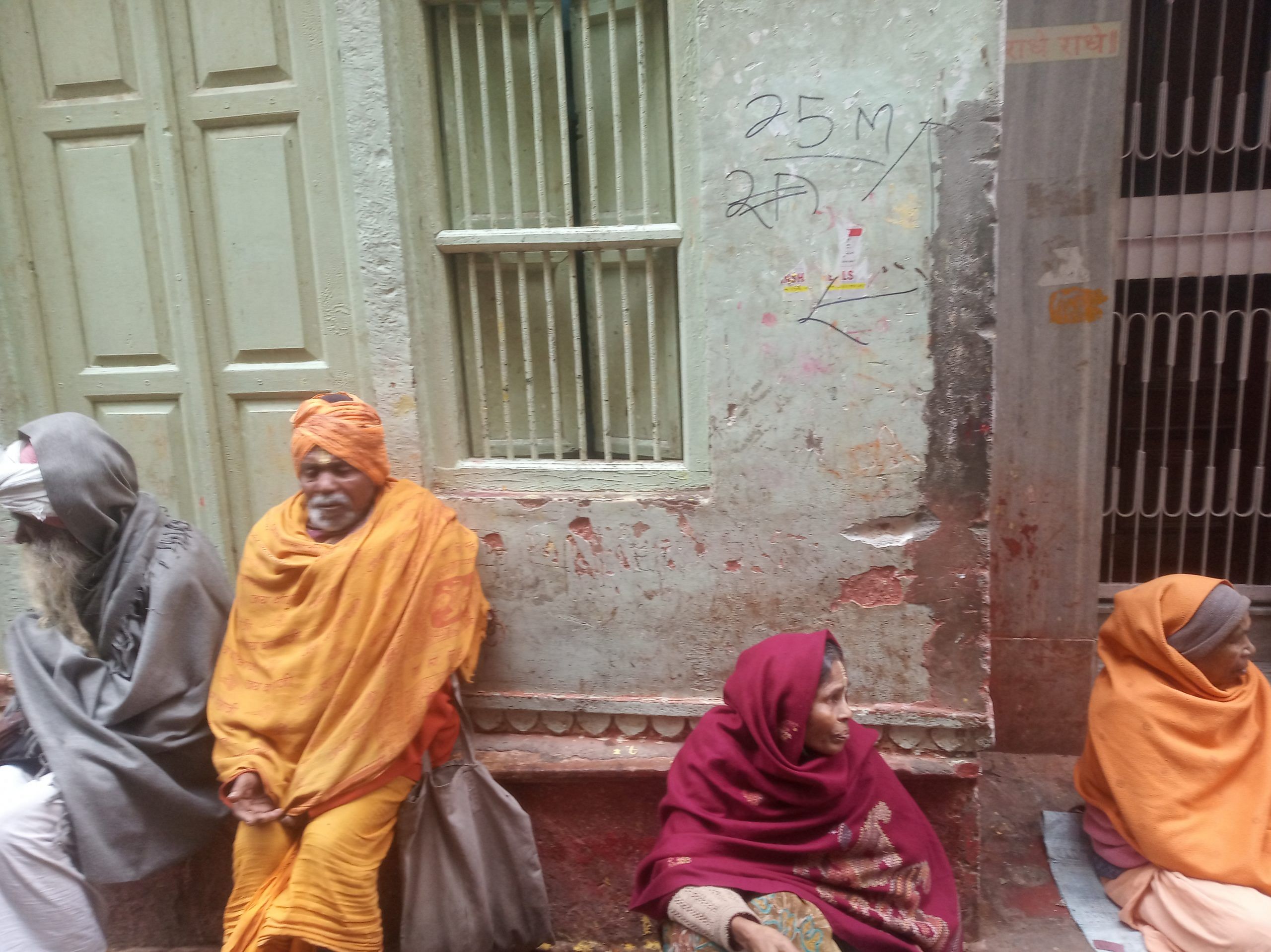
On 20 December 2022, the Allahabad High Court, while hearing Sharma’s PIL, directed the Uttar Pradesh government to protect the ancient temples situated in the vicinity of the Bankey Bihari temple. It has sought details of the development plans and the estimated costs of the project as well as the purchase of additional land on 17 January.
Five days after the high court’s directive, the Mathura district magistrate constituted an eight-member committee to complete the survey work. District Municipal Commissioner Anunaya Jha told ThePrint that four teams carried out survey work in Biharipura and Jangalkatti areas around Bankey Bihari temple between 3 and 8 January as per the high court’s order.
“The land has been evaluated during the survey. The report is almost ready. Some amendments are yet to be made, after which it will be handed over to the high court through the District Magistrate,” said Jha.
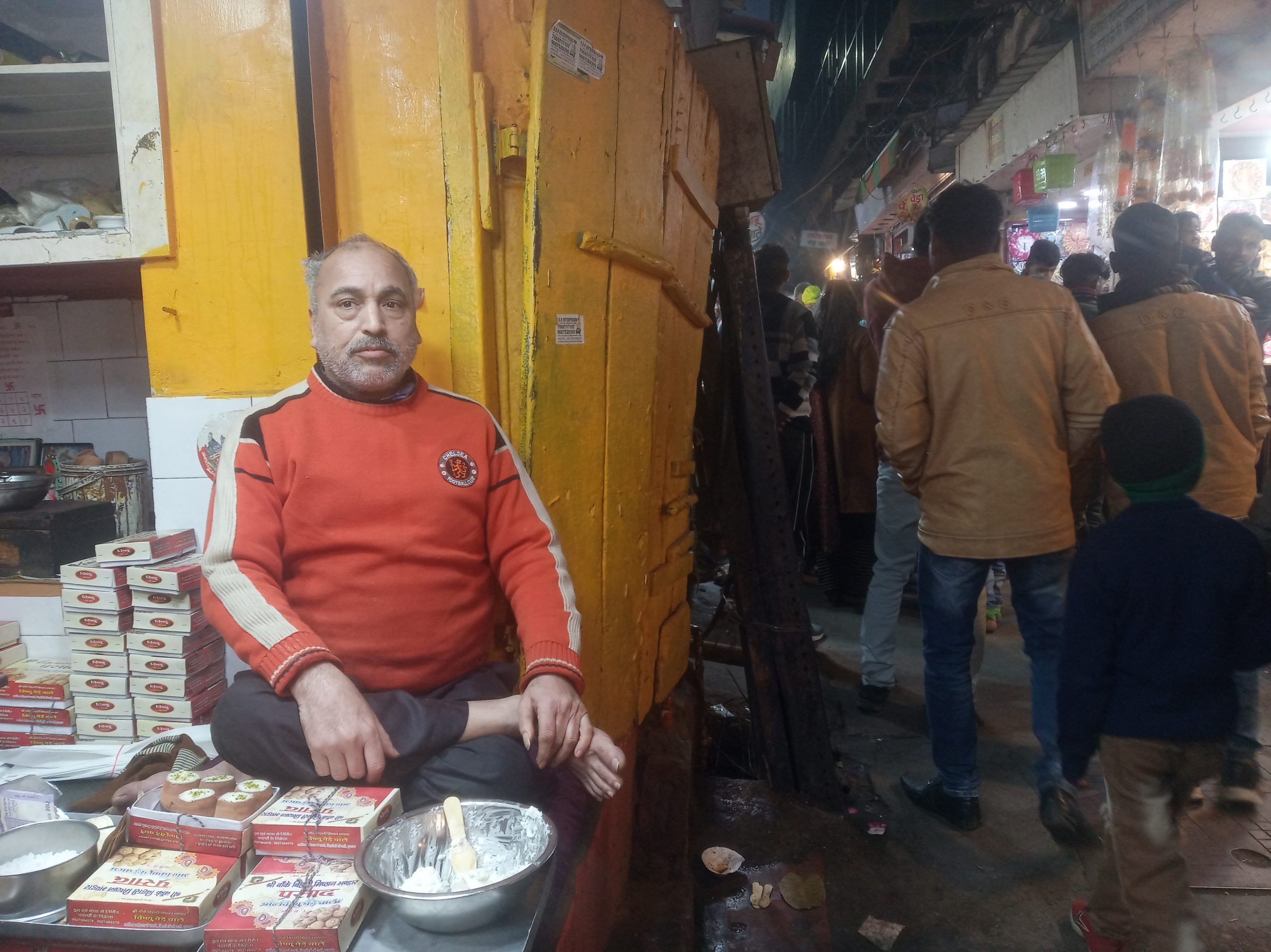
Traders, however, allege that they had not been consulted.
“Black-coloured signs were put outside our houses and shops. But officials did not tell us anything, they just measured it with tape,” says Sunil Kumar Agarwal, who runs a shop in the Biharipura area.
Surrounded by colourfully clothed idols of Lord Krishna, he is worried that his business will be drowned out by the drumbeat of development. “Yogi ji may be stubborn, but one day, he will also have to face the punishment here,” Agarwal told ThePrint.
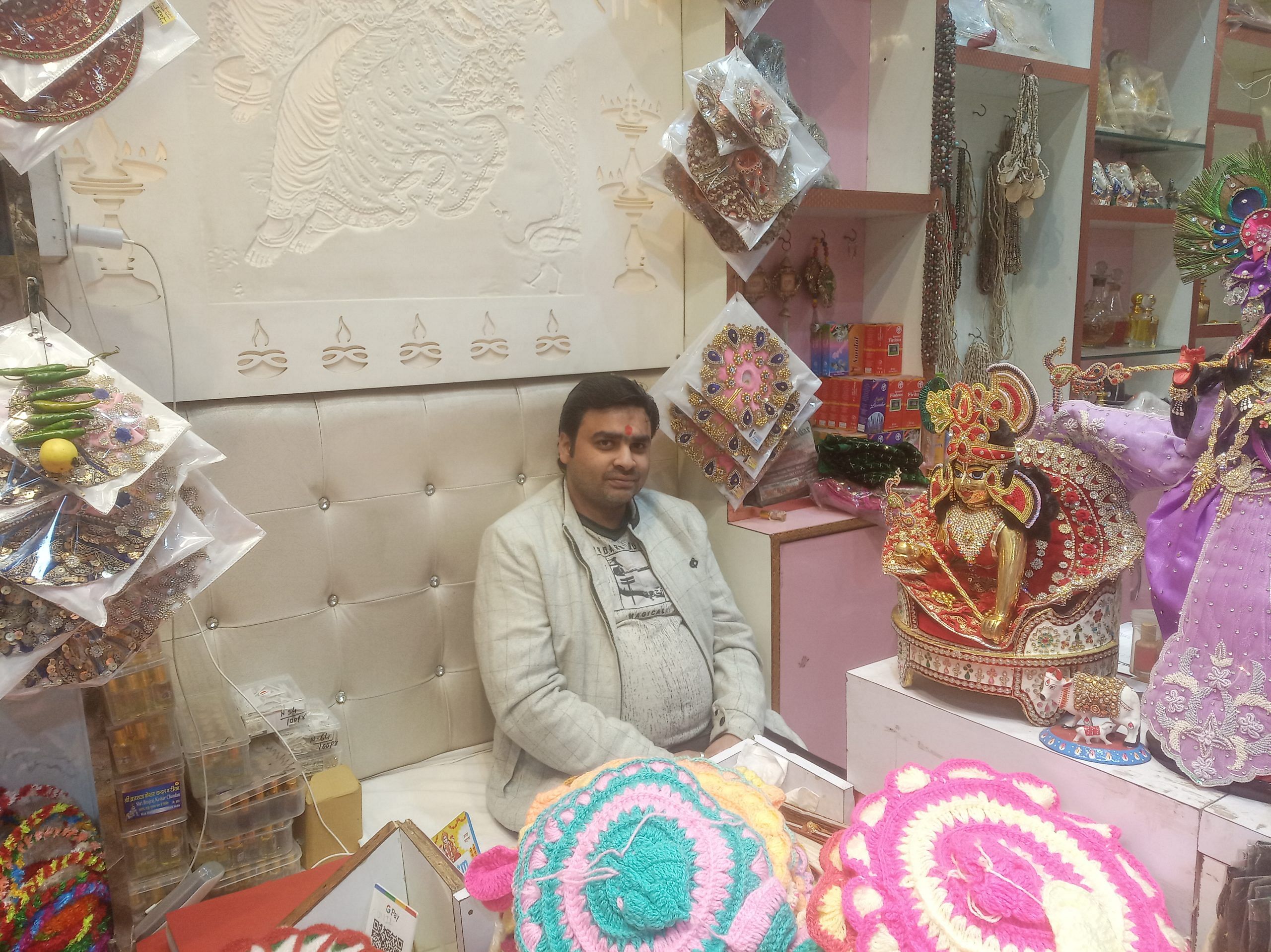
Pankaj Goswami, who runs a sweet shop in front of the temple, prays that the court will make “the right decision”. “May Thakur ji give the judge wisdom.”
He, too, claims that traders were taken by surprise during the survey. “The officers have come and marked. Everyone is still in doubt. Chain se khana nahi kha pa rahe hain (we are unable to feed ourselves properly),” he says.
Since the stampede last year, the local administration has introduced a slew of measures to control crowds. Roads are now barricaded and vehicles have been banned. Residents have to carry their Aadhaar card in the temple area because the police may ask them for it. “We have become like prisoners in our own homes,” Goswami adds.
Gautam, association president, intends to fight this project tooth and nail. They plan to submit an affidavit against the project in the Supreme Court suggesting that the government develop a Sapt Devalaya Corridor on the banks of the Yamuna instead. This would include not just Bankey Bihari temple, but others like Radha Vallabh and Madan Mohan temples as well.
“We will try to hold talks with the DM, and if our demands are not met, we will close the market indefinitely. There will be a vigorous agitation,” Gautam warns.
For the past three days, local people and traders have been staging protests. Wearing black bands, they took out a procession on 12 January. A kirtan was performed on the plinth of the temple and the market will be closed “symbolically” for two days on 15-16 January.
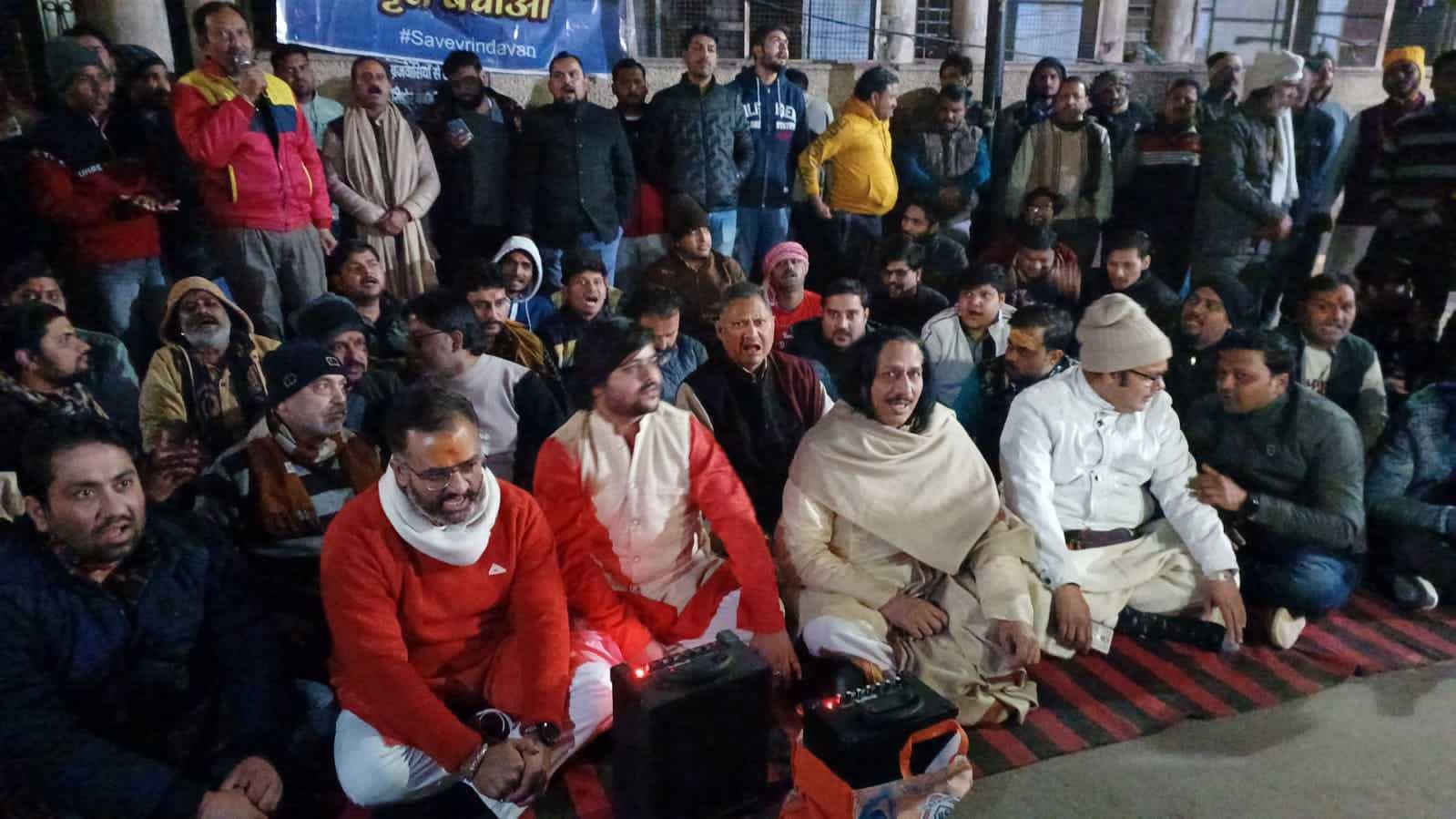
Also read: Rise of Gorakhpur, fall of Mathura – How UP’s temple towns contribute to economy
Temple committee on the warpath
Sharma isn’t the only person to have approached the Allahabad High Court. The priests of Bankey Bihari temple have also sought impleadments to include them in the matter.
“Seven impleadment applications have been filed in the high court. Those who will be affected by this proposed corridor are not being heard,” claims priest Goswami, the temple committee’s vice-president.
The priests are worried that temple funds will be used to purchase the surrounding five acres of land or diverted towards the project.
Asim Chandra, the lawyer representing the Rajbhog Goswami—a community of priests in charge of the morning prayers—says the state government intends to use temple funds.
“In its affidavit, the government claimed that temple funds amounting to Rs 25o crore could be used to build the corridor. We opposed this in the court. The money belongs to the deity,” says Chandra.
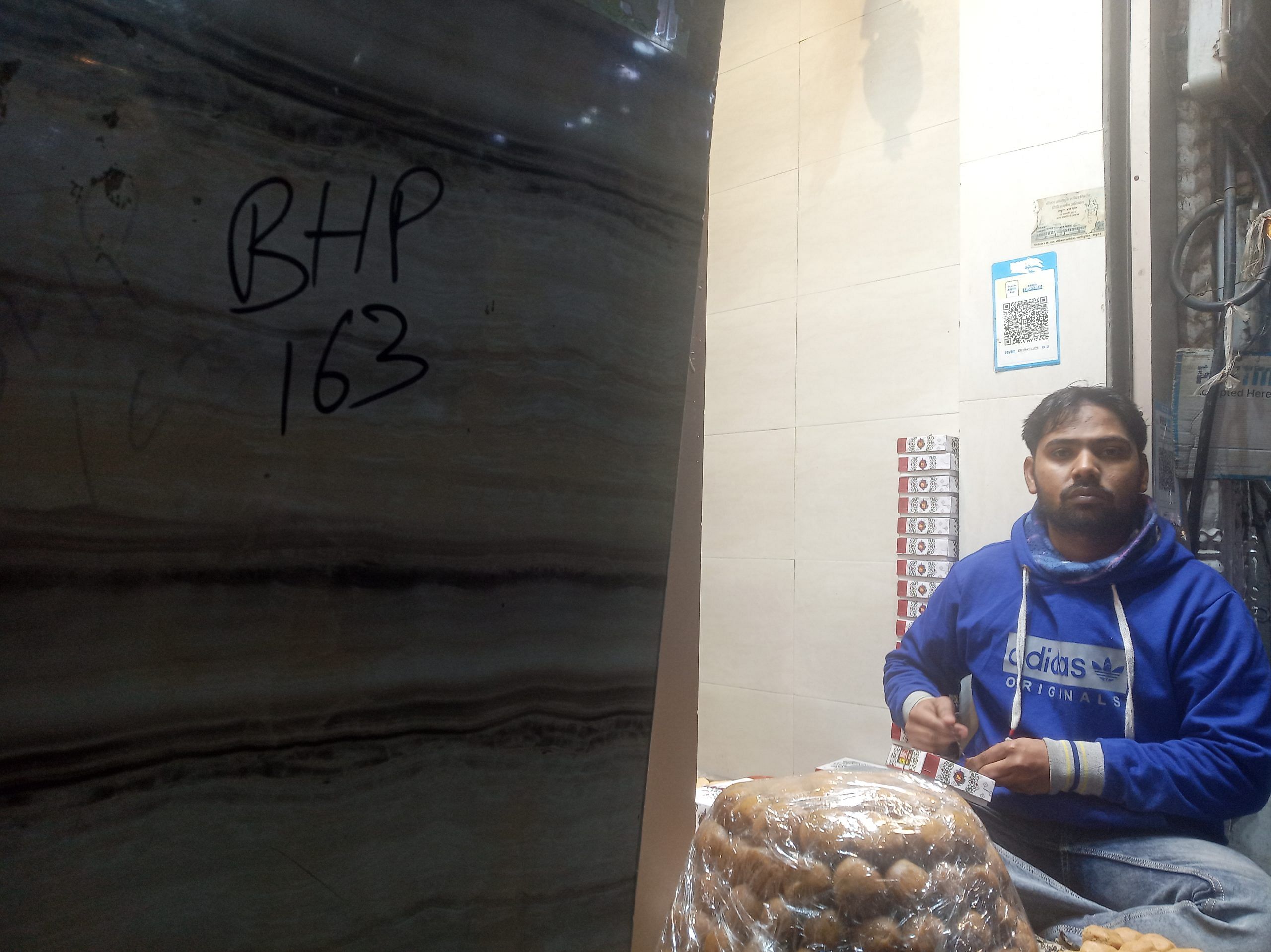
Temple committee members are facing an uncertain future. The Adityanath government has proposed in its affidavit that a new 11-member management committee will be formed to oversee the temple’s management. Only two members of this proposed body will be priests. Incidentally, Sharma, in his PIL, too, has proposed for better management of the temple.
Chandra pointed out that the Bankey Bihari Temple Committee has been managing the temple since 1939 based on a Mathura civil court order.
“It has been demanded in Sharma’s PIL that those decisions be declared null and void. Court is not listening to the stakeholders. The government only wants to control the temple,” he alleged.
In other temples, priests are tracking this project and are worried that development will come knocking on their doors as well.
“You cannot compare the Kashi corridor to Vrindavan. Even the Mughals did not treat Thakur ji so badly the way the BJP government is doing,” said a priest of one of the two temples, which falls within the five acres of land that is proposed to be acquired for the corridor.
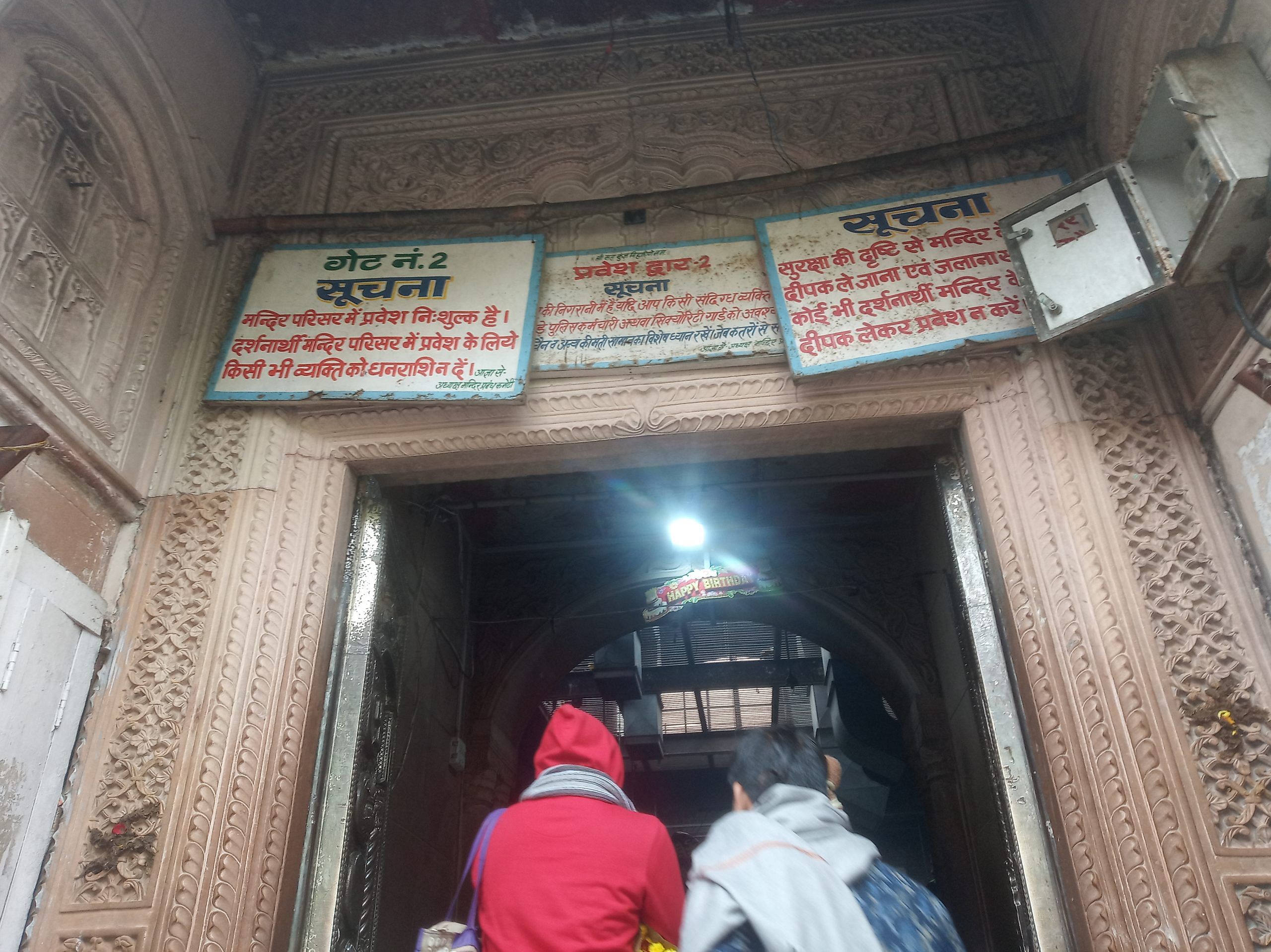
Also read: For BJP, Gyanvapi is like Babri. It’ll swing elections but take India back to a dark past
Politics at play
About eight years ago, then-Samajwadi Party government in Uttar Pradesh had tried to take over the management of the Banke Bihari temple but backed out after the priests agitated.
Scuttlebutt has it that the BJP will not be so easily cowered. “To say that the government will not touch the temple is a lie. The government has said in an affidavit that a new management committee should be formed. So how can I believe that the government will not interfere?” asked Goswami.
Lawyer Chandra alleges that it is the “pet project” of Shailjakant Mishra, vice president of Uttar Pradesh Braj Teerth Vikas Parishad. The parishad had been constituted by the Adityanath government in 2018 to oversee development of the Braj region. Adityanath is its chairman, and under Braj Teerth Development Plan 2041, eight places including Mathura, Vrindavan, Nandgaon, Gokul, Barsana, Baldev and Mahaban are to be developed.
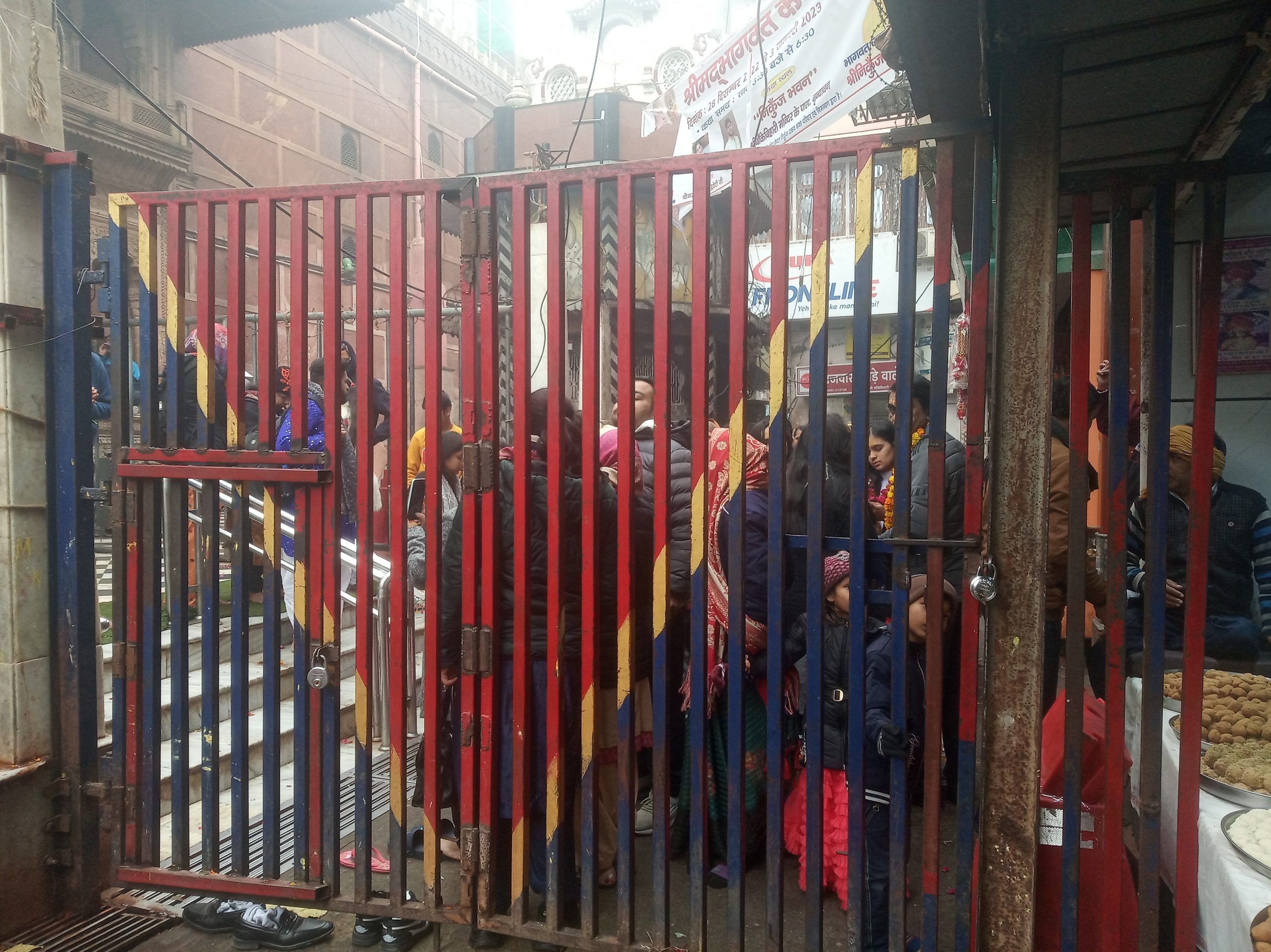
In fact, District Municipal Commissioner Jha also sought the parishad’s proposed plans for the area, which he has received. When ThePrint contacted Mishra, he denied the parishad’s involvement in the Bankey Bihari temple development plan.
Vishva Hindu Parishad (VHP) has been unusually silent, even though it had vociferously protested the Samajwadi Party’s plans.
“At that time we protested because the government used to impose things and create pressure. But today’s BJP government takes everyone along and moves forward,” says VHP’s Vrindavan president Amit Jain.
He is now convinced that the temple and its surrounding areas need to be developed on the altar of tourism.
“I will praise the government for the corridor because the number of people coming here is increasing continuously. The corridor is like a big havan in which people will have to sacrifice, but tourism will increase in the coming times. Traders will get a lot of benefits,” Jain adds.
On the ground, BJP Mayor from Mathura-Vrindavan Mukesh Arya Bandhu is trying to drum up support for the project. “Modi-Yogi’s government helps people, not destroys them. India is moving forward and is going to become a vishwa guru (world leader). That’s why it is necessary that a grand corridor should be there for the darshan of Shri Krishna,” he says.
Local Congress leaders have also waded into this hotbed of ideology and spirituality. Party’s Mathura president Bhagwan Singh Verma has called for the administration to take all stakeholders into confidence and show them the entire blueprint. “But this has not been done. This is just a dictatorship,” he said.
Also read: From Ayodhya to Kashi, BJP changed its strategy from ‘demolition’ to construction
Tourism and culture
The Bankey Bihari temple in Vrindavan is one of the most famous temples of Lord Krishna in India. It’s where he is believed to have worshipped as a child.
Earlier, Bankey Bihari, considered to be the combined form of Radha and Krishna, was worshipped at Nidhivan. But after the construction of the temple in 1864, the idol was moved to its existing location. It draws lakhs of devotees and tourists every year, and numbers swell during Janmashtami.
For the priests and residents, the maze of narrow or ‘kunj’ streets is the very essence of Vrindavan’s identity. It is believed that these streets were the playground of a young Lord Krishna.
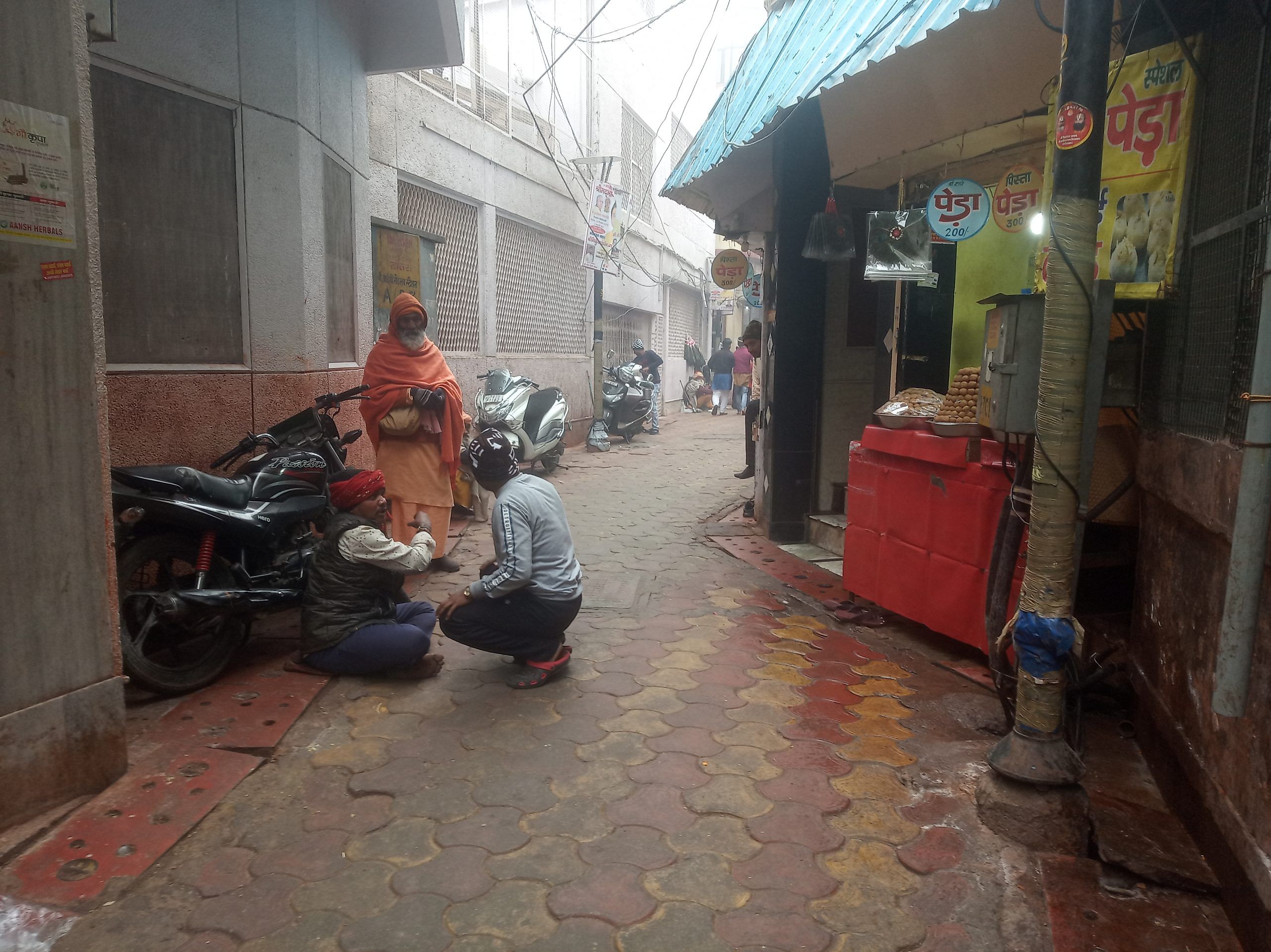
“The kunj streets are described in the Puranas (Hindu scripture). This area should have been declared a no-construction zone long ago. Vrindavan is Bhaavbhoomi, it is not Karmabhoomi or Daanbhoomi. Every pilgrimage place has a different significance. No one will come here to see the tourist centre,” says a local priest who did not want to be named.
But proponents of the project underscore the importance of developing facilities and infrastructure to ensure the safety and comfort of devotees.
“Religious tourism will do well through such a corridor. Importance is being given to religious places so that they will no longer be neglected. Ever since the corridor has been built in Kashi, tourism has increased,” says Badri Narayan, professor and director at the G.B. Pant Social Science Institute, Allahabad.
Many tourists and regular devotees who travel hundreds of kilometres to visit the temple are more open to the government’s plans. Tarun, who lives in Dubai, but makes an annual pilgrimage to Bankey Bihari temple, has come to dread the lack of facilities. “There is no place to even keep our shoes and slippers here. This corridor should be made,” he says.
Columnist Chari suggests that institutions like the Archaeological Survey of India should discharge their duties with more care, concern and efficiency. “Such institutions should have experts as members and advisors and not politicians,” he says.
But the stakes are high. The government has to convince the courts and quell the growing discontent among staunch BJP supporters who call the streets home.
“This is not the time of kunj streets,” says RSS Vibhag Sanyojak of Mathura-Vrindavan Ramvir Yadav.
(Edited by Prashant)


